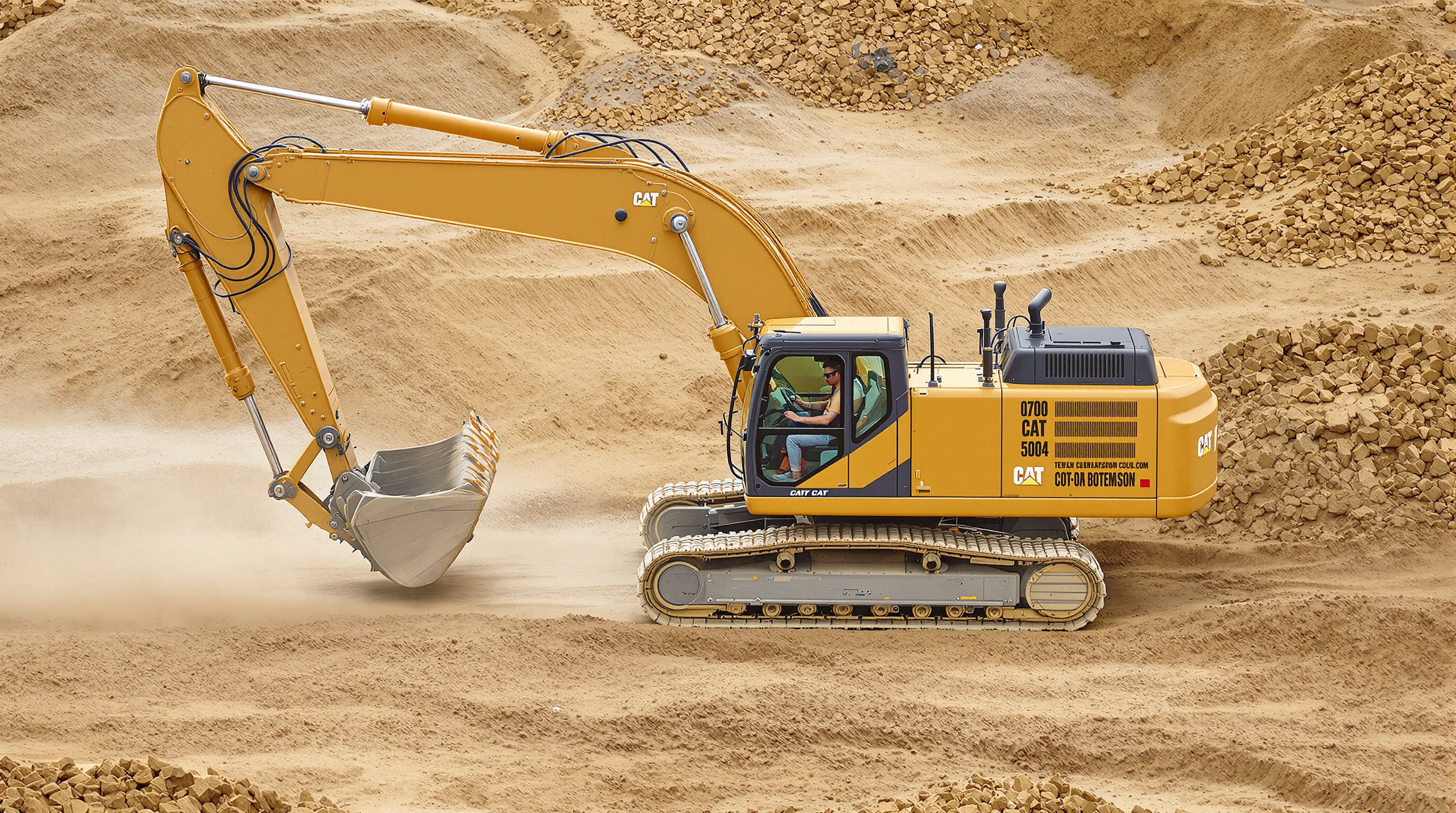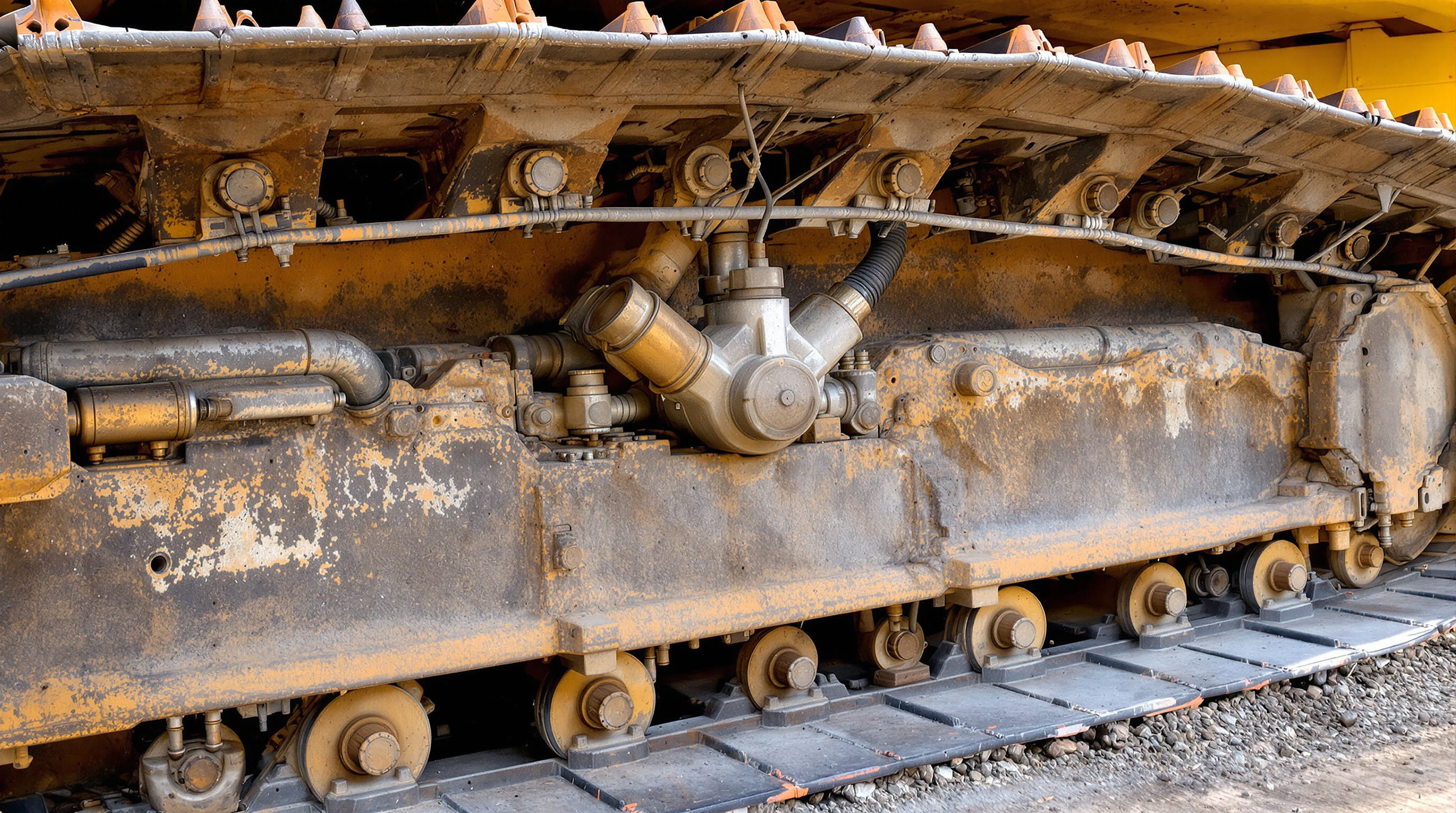The Science of Track Adjuster Cylinder in Undercarriage and Its Impact on Fuel Efficiency

Understanding the Relationship Between Track Tension and Fuel Consumption
Getting track tension right cuts down on rolling resistance so heavy machinery can roll along without wasting so much energy. Properly adjusted tracks stay in good contact with the ground but don't create too much friction either. That means machines run smoother overall and put less strain on their engines. The result? Lower fuel bills because there's simply not as much power required to fight against all that extra drag from poorly maintained tracks.
How Improper Tension Increases Rolling Resistance and Fuel Use
Loose tracks cause slippage and uneven contact, increasing friction. Overtightened tracks strain critical components like idlers and sprockets, forcing the engine to work harder. Both conditions elevate rolling resistance by up to 18%â€"equivalent to carrying an unplanned loadâ€"leading to higher fuel use.
Data: Up to 15% Higher Fuel Consumption with Incorrect Track Tension
A 2023 analysis of 200 excavators found that machines with improper track tension consumed 14.7% more fuel on average than properly adjusted units. This inefficiency stemmed from prolonged engine strain, with operators spending 32% more time in high-RPM modes to compensate for increased resistance (Heavy Equipment Efficiency Report, 2023).
Case Study: Measurable Fuel Savings After Optimizing Tension with Track Adjuster Cylinder in Undercarriage
A mining contractor reduced fuel costs by 12% within six months by integrating hydraulic Track Adjuster Cylinder in Undercarriage systems. The automated adjusters maintained ±2% tension variance across changing terrain, eliminating manual corrections and stabilizing fuel consumption. This precision saved 1,200 liters of diesel monthly across their 15-excavator fleet.
Track Adjuster Cylinder in Undercarriage: Enabling Precision and Consistency in Tension Control

Role of the Track Adjuster Cylinder in Maintaining Optimal Track Tension
The hydraulic track adjuster cylinder is basically the brains behind modern undercarriage systems, handling track elongation issues when loads shift around or temperatures fluctuate. These aren't your old school static adjustment systems though. They work by pumping hydraulic fluid through the system to keep tension levels right around what manufacturers recommend, usually within half a percent to one percent tolerance. Take a standard 40 ton excavator for example. The adjuster can push out close to 18 kilonewtons of force just to stop tracks from getting loose, but smart enough not to stress other parts beyond their limits either. This kind of intelligent adjustment makes all the difference in day to day operations where conditions constantly change.
How Hydraulic Adjusters Respond to Terrain-Induced Tension Fluctuations
When navigating rocky slopes or muddy terrain, track adjuster cylinders make up to 30 micro-adjustments per minute to counteract sudden tension changes. Sensors in the undercarriage detect:
- Compression forces exceeding 120 PSI from rock impacts
- Track slack greater than 3 cm in soft ground
Hydraulic pressure redistributes within 0.8 seconds, absorbing shocks and preventing damage to idlers and sprockets.
Comparison: Manual vs. Functional Adjuster Systems in Tension Control
| Factor | Manual Systems | Hydraulic Adjusters |
|---|---|---|
| Adjustment Frequency | 1–2 times per shift | Continuous |
| Tension Accuracy | ±15% | ±0.8% |
| Undercarriage Wear | 20% faster component wear | OEM lifespan compliance |
Field tests show operators using hydraulic adjusters complete grade-leveling tasks 12% faster due to reduced vibration-related corrections (Equipment World 2023).
Industry Data: 30% Fewer Undercarriage Issues With Functional Adjusters
A study of 2,300 tracked machines found that hydraulic adjusters reduced:
- Idler replacements by 34%
- Roller bearing failures by 29%
- Track link fractures by 41%
This resulted in a 17% decrease in total ownership costs over 5,000 operating hours (Global Construction Machinery Report 2023).
Reducing Undercarriage Wear Through Optimal Track Tension Management
How Loose or Tight Track Tension Accelerates Wear on Critical Components
Improper tensionâ€"whether too tight or too looseâ€"accelerates wear across the undercarriage. Excessively tight tracks increase friction between rollers and guide lugs, generating heat that degrades components up to 40% faster (2024 Undercarriage Maintenance Report). Loose tracks cause misalignment, leading to uneven force distribution and premature sprocket tooth wear.
Key Wear Points: Idlers, Rollers, and Sprockets Affected by Improper Tension
Idlers and rollers suffer most from tension-related stress, with industry analysis showing improper tension accounts for 68% of early replacement cases. High tension increases idler load, accelerating bearing failure, while loose tracks cause track chains to slap sprocket teeth, resulting in pitting and fractures.
Study: Proper Tension Extends Undercarriage Life by Up to 25%
A 2023 field study of 200 excavators found machines using functional Track Adjuster Cylinder in Undercarriage systems achieved 25% longer service intervals for rollers and idlers compared to those relying on manual adjustments. Consistent tension control reduces metal-on-metal abrasion, preserving component integrity and deferring an average of $18,000 in replacement costs.
Best Practices for Daily Monitoring and Maintenance of Excavator Track Tension
Why daily checks prevent long-term damage and inefficiency
Checking track tension every day makes it possible to spot debris accumulation and tension problems before expensive fixes become necessary. When tracks are too loose, the rollers and idlers tend to wear out faster actually about 22 percent quicker than when everything is correctly tensioned according to research from Heavy Equipment Journal back in 2023. On the flip side, tracks that are too tight put extra strain on the sprockets and motor components. Maintenance crews that stick with their daily inspection routine typically replace undercarriages around 30% less often within a year based on what we've seen across various fleet operations.
Step-by-step guide to inspecting tension using the Track Adjuster Cylinder in Undercarriage
- Warm up the excavator: Operate for 15–20 minutes to normalize track temperature.
- Measure sag: Lift the track mid-span and use a tension gauge–optimal range is 20–40 mm.
- Activate the hydraulic adjuster: Engage the Track Adjuster Cylinder to fine-tune tension to OEM specifications.
- Verify consistency: Recheck tension after initial operation, adjusting for terrain changes like mud or loose gravel.
Impact of neglect: Increased risk of damage and operational downtime
Delayed adjustments expose rollers and bushings to 40% more stress during pivoting, often leading to premature track link fractures. Equipment managers report downtime costs exceeding $2,800 per incident when addressing tension-related failures. A 2023 case study found excavators with irregular maintenance schedules required undercarriage overhauls 18 months earlier than those under consistent monitoring.
FAQ
What is track tension, and why is it important?
Track tension refers to the tightness of the track on heavy machinery, crucial for minimizing energy loss due to rolling resistance and ensuring machinery runs efficiently.
How does improper track tension affect fuel consumption?
Improper track tension, whether too tight or loose, increases rolling resistance, causing machinery engines to work harder and consume more fuel.
What are hydraulic track adjuster cylinders?
Hydraulic track adjuster cylinders are systems that automatically adjust track tension based on terrain and load changes to maintain optimal performance.
How often should track tension be checked?
Daily checks are recommended to ensure track tension remains within optimal range, preventing undue wear and operational inefficiency.
Table of Contents
-
The Science of Track Adjuster Cylinder in Undercarriage and Its Impact on Fuel Efficiency
- Understanding the Relationship Between Track Tension and Fuel Consumption
- How Improper Tension Increases Rolling Resistance and Fuel Use
- Data: Up to 15% Higher Fuel Consumption with Incorrect Track Tension
- Case Study: Measurable Fuel Savings After Optimizing Tension with Track Adjuster Cylinder in Undercarriage
- Track Adjuster Cylinder in Undercarriage: Enabling Precision and Consistency in Tension Control
- Reducing Undercarriage Wear Through Optimal Track Tension Management
- FAQ




